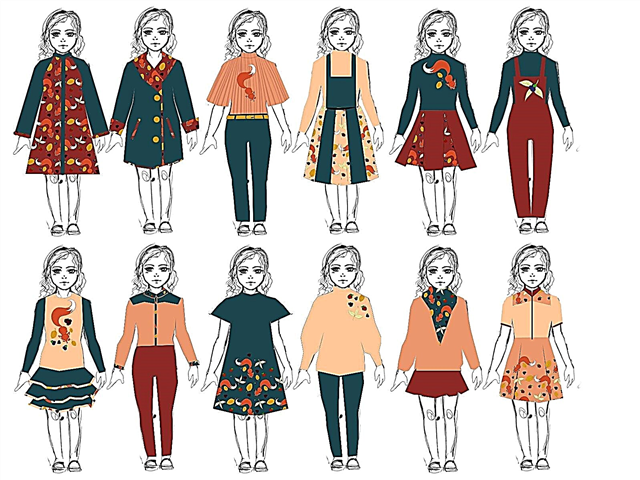Share
Pin
Tweet
Send
Share
Send
They served as an amulet, they fastened clothes, shoes, a belt, a hairstyle. Many symbolized the power of the owner. The history of these products is the same age as human history.
But the glass mass was used as a cheap substitute for precious stones. With the development of technology and the growth of living standards, the middle class also became interested in jewelry. Now, not only the presence of precious stones was appreciated, but also the work. In France, the master was known Georg Frederick Straz. His glass and base metal products were in great demand, and his last name became the name of imitations of precious stones. Over time, world-famous jewelry brands appear - Tiffany & co in America, Cartier in France, Bvlgariin Italy.
Fakes? Masterpieces!
A couple of centuries ago, when making jewelry, jewelers copied family jewelry. Thanks to their skill, simple metal rang, the glass came to life, the fake was striking in its sophistication and grace. These masterpieces of deceitful art today adorn many museums in the world.
Great Benvenuto Cellini, a sculptor and jeweler of the Renaissance, came up with a foil under the rim, which enhanced the sparkling of a not too precious stone and multiplied its value. Peak production bijou accounted for the 30s of the XX century. At that time, items of gilded silver or silver with insets of semiprecious stones (topaz, amethyst, citrine), some organic materials (pearls, coral), and enamels were considered “inexpensive” jewelry. Over the years, bijou "cheaper", but did not lose sight.
There were many ways of jewelry "deception". For example, firing can improve the color of some stones: yellow-red topazes are light red, and blue sapphire becomes watery-light and simulates a diamond. The question remains whether the gems created in the laboratories can be considered an imitation, because even specialists cannot distinguish them by eye from the real ones, which have lain for centuries in the earth: they differ in neither the ability to refract light, nor color play, nor shine. For centuries, mankind has dreamed and finally learned to make artificial, but at the same time real gems, for example cubic zirconia (Physical Institute of the Academy of Sciences - LPI), corundum, ruby, synthetic diamond.
Jewelry as art was born when jewelers created jewelry that was completely indistinguishable from originals that cost millions. Well, the 20th century was the heyday of the original jewelry. Since 1925, replacing jewelry dragonflies, butterflies and languid irises of Art Nouveau, ardeco-style jewelry (Art deco), in which the geometric dynamics of lines and open colors prevail.Inexpensive luxury
The time has come for Chanel and her democratic jewelry. "When you wear bijou objects, they must be meaningful, bright. And then what difference does it make, are these real jewels?" - asked Coco. And she raised a string of fake pearls to the rank of high fashion. And soon elegant women began to wear jewelry for a walk and even on the beach.In the 50s, Chanel introduced long chains with colored "stones", returned the necklaces to fashion. Her manner of wearing faux pearls followed at one time Baroness Rothschild and other notable ladies.
"I think of all the women who, thanks to the" Chanel jewelry, "are cheap luxury," Mademoiselle said. "There should be a lot of jewelry! If they are real, it ... gives off boasting and bad taste.". And to this day, bijou, invented by Chanel, does not go out of fashion.
Fashion is changing too quickly in order to have time to pick up expensive “jewelry” for a new dress. Coco Chanel introduced the special term costume in relation to costume jewelry, wanting to emphasize that these jewelry became an integral part of a fashionable costume.
John Galliano over the past two years, has been representing for the House of Christian Dior stunning collections of jewelry, the value of which is determined by the acuteness of the fashion idea: necklaces with hand-painted porcelain medallions; African-style necklace, "medieval collars" made of metal lace. Yes, new jewelry makes extensive use of artificial materials, sometimes defiantly "fake."
It's nice that bijou can be worn with almost any outfit. But do not mix it with jewelry - only Chanel did not look vulgar. And with suspiciously cheap jewelry you should be more careful: they can be made of unsafe materials with poor-quality paint.
By the way, jewelry is beautiful as a field for creativity. You can easily, for example, put on a large necklace as an elegant strap for a small dress, and casually wind the necklace over your hand to “invent” an original wide bracelet. The main thing is to wear bijou with pleasure and often recall Chanel's advice: there should be a lot of jewelry - like daily joy.
On a note
Famous artists and fashion designers create modern jewelry; the production of artificial jewelry is growing rapidly. The mesmerizing radiance of Yabloneks stones allowed Czech jewelry to be on a par with the best jewelry in the world; Italy is famous for enamels and Murano glass; Mallorca is the birthplace of the highest quality artificial pearls; Austria is the famous Swarowski crystals. Serious competitors of Europeans are Japan, Hong Kong and Taiwan.
 The article was published based on the materials of the magazine Good Kinds
The article was published based on the materials of the magazine Good KindsPhoto: PR
Material prepared by Julia Dekanova
Share
Pin
Tweet
Send
Share
Send


















